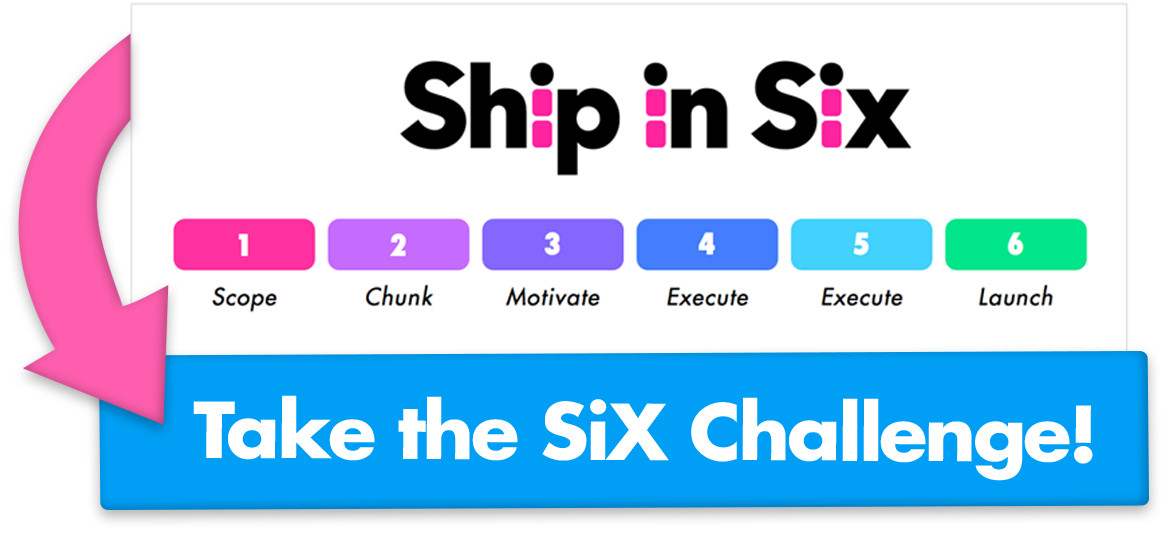
Lesson #1: Start at the End
Forget, for a hot second, that we live in the age of Google Maps. Remember what it was like back when you had to make your own directions?
How did you do it, when you were headed somewhere you'd never been before?
Maybe you found your current spot on the map, took a finger, and traced every. single. road. that left your destination, til you managed to hit one that led to where you were going.
Not bloody likely, though. That's a waste of time.
What you actually did was a lot smarter. If you didn't already have a good idea how to get there, you looked at your destination first:
- Which roads arrived in that town?
- Where did those roads connect to the highway?
- Now, how can you get to that highway from where you are?
In other words: You started at the end.
Because you were going somewhere specific. If you began at the beginning, you had to try every single direction until you found one that worked. In other words, you had infinite choices.
There's no way to plan effectively for infinity. You've gotta narrow that stuff down!
That's why so many creative endeavors fail, especially side or personal projects. Nobody can handle infinite choice.
That's why JFS Principle #3 is…
Always work backwards.
You need a clear picture of the finished product, or else how will you plot your course?
How will you know when you've arrived?
How will you know what to include?
How will you know when to stop? How will you identify "Done"?
Let's say you want to write a book.
It honestly doesn't matter if we're talking fiction or nonfiction, because the end result is always a reader who is moved in some way.
You have to ask yourself: How do you want to move your reader?
Do you want them to take action? If so, which actions? How?
Do you want them to feel certain feelings? Which feelings? When?
(And what if you want to write this book purely for yourself? Well, then it's your actions and your feelings you should be taking into account.)
There's lots of room in the market for many different types of books.
But there's no room at all for the book that doesn't understand its own destination.
Think about the last time you picked up a book and it just left you cold.
Probably the "Introduction" was full of Facts that Set the Scene and Word Definitions (nonfiction) or endless, pointless exposition and backstory (fiction).
That's how you can tell: the author started at the beginning.
They lacked a clear goal (action, feeling), so they wrote "about" the topic instead. They tried to include everything.
They just flung themselves forward without a specific, concrete destination in mind.
And so they never got there.
And their reader will never get there.
That's why the book sucked. (And I can guarantee you: It was hard to write.)
"OK, Amy, but I never wanted to write a book. That's not my thing. That's not my That Thing."
Doesn't matter. Books are just one example. Anything you make, you make to create action or feelings (or both) for someone:
- Software is used to achieve a result, whether it's to implement a process, to save time and energy and emotion, or to automate something away
- Kitchens are to cook and entertain (or to look good and impress your real estate buyers)
- Art is to be "appreciated" (some art makes you happy, some makes you think, and some make you hurt… and tastes differ, but there's no such thing as good art that leaves a lukewarm impression on everyone)
No matter what you're making, you have to know:
- How will it look?
- How will it work?
- What will you do with it?
- How will it make you feel?
- For whom?
- Why?
- How?
These are the most important questions in the life of That Thing. And you need to know the answers before you start.
Answer them and you can create a concise, clear, efficient route for yourself from here to there.
That's why you should always Start at the End.
AmyDid you get this lesson from a friend?
Welcome to the Ship in Six Challenge - we're here to help you start, finsh, and ship! Don't miss out on the rest of the 6 week challenge yourself, sign up below.

Scope, chunk, motivate, execute, and finally launch your project!
Join our challenge to get 6 weeks of rules and tricks from our personal playbook, along with personal stories and case studies to help you get that thing you've been wanting to finish, shipped.
When you subscribe, you’ll also get biz advice, design rants, and stories from the trenches once a week (or so). We respect your email privacy.
Here's what comes next
- WEEK 1 — Start at the End, Design Your Destination
- WEEK 2 — Cut Without Remorse, Break It Into Bites
- WEEK 3 — How Do You Stay Motivated?, Finish Something Microscopic
- WEEK 4 — The Myth of the Big Win, Creating the Little Win Habit
- WEEK 5 — The Life Changing Magic of Shipping 1 & 2
- WEEK 6 — Myth of the Big Launch, The Fear of Shipping
- BONUS WEEK 7 — You Shipped! Now what?
